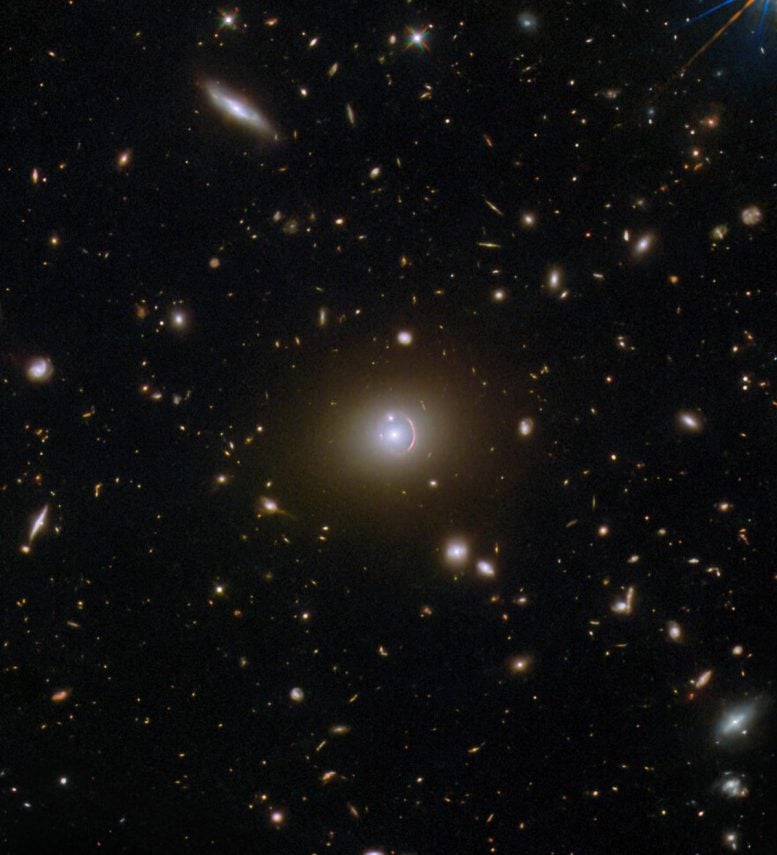
Studying a Mysterious Image: A Multitude of Galaxies
What are we looking at when we study this Hubble Space Telescope image? A very distant galaxy that lies 19.5 billion light-years from Earth? Or a much closer luminous red galaxy that is a (relatively) small 2.7 billion light-years away? Or a third galaxy that appears to be fairly close to the second?
The answer, perhaps confusingly, is that we are looking at all three. More precisely, we are looking at light emitted from all of those galaxies, even though the most distant galaxy lies directly behind the first as seen from Earth. In fact, it is that very alignment that makes the particular visuals in this image possible.
Identifying the Galaxies: SDSS and HerS
The central bright dot in this image is one of the closer galaxies, known by the lengthy — but informative — name of SDSS J020941.27+001558.4 (galaxy names in this format provide precise information about their location in the sky). The other bright dot above it — that appears to be intersecting a curving crescent of light — is SDSS J020941.23+001600.7, the second closer galaxy. And finally, that curving crescent of light itself is the ‘lensed’ light from the very distant galaxy. This is known as HerS J020941.1+001557, and it is also an interesting example of a phenomenon known as an Einstein ring.
Einstein Rings: The Science Behind the Curving Light
Einstein rings occur when light from a very distant object is bent (or ‘lensed’) about a massive intermediate (or ‘lensing)’ object. This is possible because spacetime, the fabric of the Universe itself, is bent by mass, and therefore light traveling through spacetime is as well. This is much too subtle to be observed on a local level, but sometimes becomes clearly observable when dealing with curvatures of light on enormous, astronomical scales, for example, when the light emitted from a galaxy is bent around another galaxy or galaxy cluster.
When the lensed object and the lensing object line up just so, the result is the distinctive Einstein ring shape, which appears as a full or partial circle of light around the lensing object, depending on how precise the alignment is. This partial Einstein ring is of particular interest as it was identified thanks to a citizen science project — SPACE WARPS — meaning that members of the public enabled the discovery of this object!
10 Comments
I don’t understand how the furthest light shown is said to be from 19.5 billion light years while my understanding is that the universe is about 13.8 billion….????
Would it be because the universe is expanding?
If the edge of the universe is 13 billion light years away from the center of the universe, then wouldn’t the width of the universe from edge to opposite edge be 26 billion light years apart?
If you search the internet for “where is the center of the universe”, you will find websites devoted to space and astronomy that give pretty good explanations to this. But it is not as straightforward as it might seem.
Exactly my thought
Yes.
Steven B, is the Steven A of astronomy 😁
We could have done with some dotted lines, as the rings aren’t all that clear.
They have no clue how big the universe is and I dont believe most of those photos are legit, just colored in. Theres no way we have the tech to see that far whem we cant even get clear pics of the moon or our own supppsed planets.
Mike – please do some basic research before embarrassing yourself.